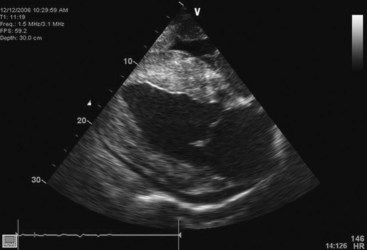Cardiomyopathy
Basic Information 
Clinical Presentation
Disease Forms/Subtypes
Acute, subacute, and chronic: These subtypes have not been well characterized in horses.
Physical Exam Findings
Diagnosis 
Differential Diagnosis
• For exercise intolerance, lethargy, weakness, weight loss: Abnormalities in respiratory, neuromuscular, gastrointestinal systems
• For arrhythmias: Arrhythmias secondary to severe valvular or congenital heart disease with cardiac enlargement; systemic disease; electrolyte abnormalities
• For heart failure: Primary valvular, pericardial, or congenital heart disease
• For respiratory signs: Primary pulmonary or pleural disease
Initial Database
• The complete blood count may be normal or may show characteristics of concurrent disease.
• Chemistry panel: Changes consistent with passive congestion from right-sided heart failure (increased liver enzymes) or changes consistent with organ dysfunction caused by decreased cardiac output (azotemia). Elevations in creatine kinase in horses with selenium deficiency may be seen. Elevations in lactate associated with poor tissue perfusion may be seen.
• Thoracic radiography: Evidence of pulmonary edema (interstitial or alveolar pattern may be seen), cardiomegaly, pleural effusion.
• Electrocardiogram (ECG): Sinus tachycardia with any additional arrhythmias.
• Echocardiogram: Will show evidence of dilated cardiomyopathy, including dilated atria and ventricles possibly with thin walls, decreased systolic function (low fractional shortening), spontaneous contrast indicating a low flow state, and distended pulmonary artery suggesting pulmonary hypertension. The left ventricle will appear hypokinetic, with an increased septal–E point separation. Doppler evaluation may show valvular regurgitation. There may be evidence of infiltrative cardiomyopathy (thick walls, heteroechogenicity of myocardium) (Figure 1).
• Cardiac troponin I: Likely elevated in cases of cardiomyopathy associated with active myocardial necrosis.
< div class='tao-gold-member'>
Stay updated, free articles. Join our Telegram channel

Full access? Get Clinical Tree



